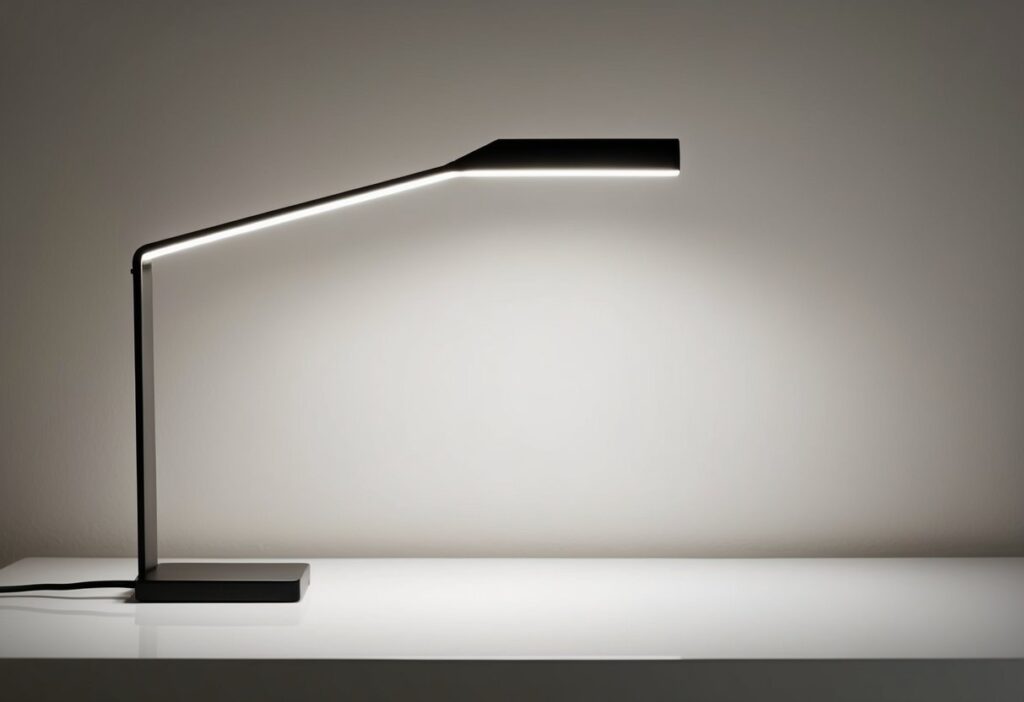Minimalist lamps can transform any space with their simple yet elegant design. They blend functionality with aesthetics, making them a perfect choice for those wanting to declutter their homes while maintaining style. A minimalist lamp not only illuminates a room but also serves as a key decor element that enhances the overall vibe.
In this article, we will explore the various aspects of minimalist lamps, from their design features to ideal placements in our living spaces. We will also answer some common questions that can help us choose the right minimalist lamp for our needs. By the end, we will have a clearer understanding of how to incorporate these stylish fixtures into our homes.
Key Takeaways
- Minimalist lamps offer a clean and simple design that complements various decor styles.
- Their functionality goes beyond lighting; they enhance the atmosphere of a room.
- Choosing the right placement is crucial for maximizing both style and utility.
Design and Aesthetics
When we explore the design and aesthetics of minimalist lamps, we notice a strong focus on simplicity and functionality. These elements contribute to their stylish appeal. We can break this down into two main ideas: simplicity and elegance, and the choice of materials and colors.
Simplicity and Elegance
Minimalist lamps stand out because of their clean lines and sleek shapes. We often find designs that avoid unnecessary decorations. Each element serves a purpose, making the lamp practical and stylish.
The elegance of these lamps lies in their unobtrusive nature. They blend easily into various spaces, from modern to traditional. A well-designed minimalist lamp can act as both a light source and a piece of art.
Adding to their appeal, minimalist lamps often balance form and function. This harmony allows them to enhance our decor without overwhelming the room.
Material and Color
The materials we see in minimalist lamps often include metal and fabric. Metal gives a modern touch, while fabric can add warmth to the design. We may find brushed nickel, matte black, or soft white finishes commonly used.
Neutral color schemes are popular. Shades like white, gray, and beige create a calm atmosphere. These colors make it easier to incorporate the lamps into existing decor.
In terms of texture, we appreciate the smoothness of metal against the softness of fabric. This contrast adds depth without complicating the visual space. Choosing the right materials and colors can significantly impact how a lamp fits into a room’s design.
Functionality and Placement

When choosing a minimalist lamp, we need to focus on its lighting efficiency and how we position it in our spaces. These factors are key to creating a well-lit environment that suits our needs.
Lighting Efficiency
Lighting efficiency is about how well a lamp provides light without wasting energy. Key elements include brightness and energy consumption.
- Brightness is usually measured in lumens. A higher lumen count means brighter light.
- Maximum wattage tells us how much energy the lamp can use.
Dimmable lamps allow us to adjust the light intensity. This is useful for creating a cozy atmosphere or for tasks like reading. Using energy-efficient bulbs can reduce electricity bills while providing the right color temperature, ranging from warm yellow to cool white light.
For example, a lamp with around 800 lumens is bright enough for a reading nook while keeping it inviting.
Appropriate Sizing and Positioning
The size and placement of a lamp affect its functionality. Each room has unique lighting needs.
For smaller spaces, a floor lamp can save space while providing adequate light. A bedside lamp, on the other hand, should be low-profile to fit comfortably on a nightstand.
When positioning the lamp, we should consider the natural light in the room. Place the lamp where it complements the natural light during the day. In the evening, position the lamp to focus on specific areas, like a reading nook or workspace.
By doing this, we ensure that our lighting meets our functional needs while enhancing the room’s overall look.
Frequently Asked Questions

We often hear questions about minimalist lamps. These inquiries help us understand the features, styles, and choices available to fit different spaces.
What are the defining features of a minimalist lamp?
Minimalist lamps typically have clean lines and simple designs. They often use neutral colors and basic shapes. The focus is on functionality without unnecessary decorations.
How do I choose the best minimalist lamp for a bedroom?
When selecting a minimalist lamp for a bedroom, consider the size and style of your furniture. Look for lamps that provide soft lighting. Adjustable brightness can enhance relaxation.
What are the recommended minimalist lamp options for a living room?
In a living room, we recommend floor lamps or table lamps with simple designs. Choose lamps that complement your color scheme. Look for options that fit the scale of your room.
Can you suggest some minimalist desk lamps for a home office?
For a home office, desk lamps should provide direct light. We suggest lamps with adjustable arms for flexibility. Look for models that have a sleek design to maintain a tidy workspace.
What should I consider when looking for a minimalist ceiling lamp?
When choosing a minimalist ceiling lamp, think about the height of your ceiling. The shape should fit your room’s overall style. Opt for designs that provide ample light without being overpowering.
What are some popular minimalist lamp designs for modern decor?
Popular minimalist lamp designs include LED strips and geometric shapes. We see the use of organic materials like wood or metal. These designs often blend well with modern decor themes.


